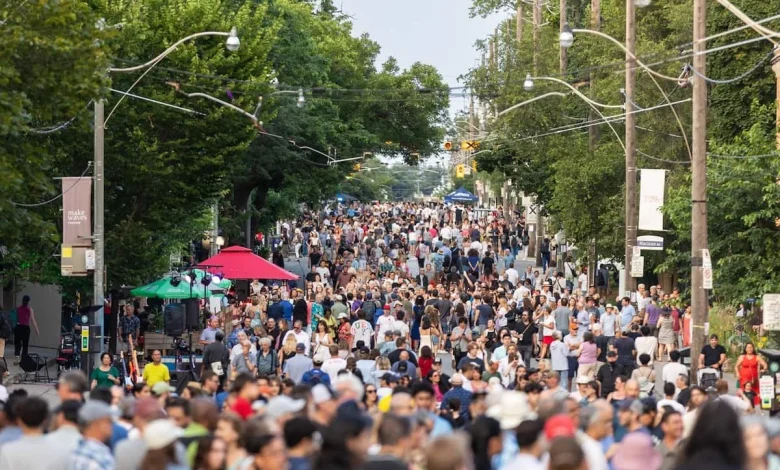How IRCC’s latest Immigration Levels Plan benefits in-Canada candidates

In-Canada candidates for permanent residence (PR) are still central to Immigration, Refugees and Citizenship Canada’s (IRCC’s) newest Immigration Levels Plan—despite the absence of an “In-Canada focus” admissions category in this year’s announcement.
In a recent media briefing, Immigration Minister Lena Diab affirmed that IRCC would “give priority for permanent residence to temporary residents already living and settled in Canada”, a policy which the Minister noted would reduce the number of new arrivals to the country.
See your eligibility for all Express Entry streams
To this effect, the 2026-2028 Immigration Levels Plan states an approach that sets “targets for temporary and permanent residents….in tandem, with a focus on transitioning to permanent residence those who are already in Canada with needed skills and experience.”
This article will cover the major policy changes that IRCC will implement to support its goal of transitioning more temporary residents to PR status.
High Express Entry allocations maintained
In the last year, Federal High-Skilled admission targets (which cover Express Entry admissions) have dropped only slightly, from 124,680 in 2025 to 109,000 in 2026.
These targets are set to increase again in 2027 and 2028, where they are set to stabilize at 111,000 admissions per year.
While IRCC has not stated how it will divide this allocation, the Express Entry system remains one of the most popular routes for those in Canada to transition to PR—and it is clear that the government has sought to maintain strong admissions through its federal economic immigration pathways. The latest Plan allocates 64% of 2026 PR admissions to economic immigration.
In light of the immigration department’s objective of transitioning eligible temporary residents to PRs, the maintenance of high Express Entry admissions targets may especially benefit candidates in the Canadian Experience Class (CEC) program.
Not only are the majority of these candidates in Canada, but research indicates that they are among the most successful immigrant cohorts in Canada’s labour market, benefitting greatly from prior Canadian work experience, which is a prerequisite to be eligible under the CEC program.
Since the invitation of these candidates meets multiple IRCC objectives, it is possible that 2026 will see the resumption of larger CEC draws; however, this remains to be seen.
Significant increases to Provincial Nominee Programs
IRCC has raised its admissions target for Provincial Nominee Programs (PNPs) significantly this year—up from 55,000 admissions in 2025 to 91,500 admissions spots in 2026. This number is set to increase further to 92,500 admissions in 2027 and 2028.
The 66% rise in PNP targets from last year indicates that IRCC has likely given provincial authorities more leeway to nominate a greater number of temporary residents already in Canada to live and work permanently in their provinces.
PNPs are a key pathway for many work and study permit holders in Canada to transition to PR status and settle in the province where they apply. Most PNPs have specialized streams that target candidates with work experience or education in their province, as this is a strong sign that candidates are able to integrate successfully and settle in a given province.
In fact, over the course of 2025, many provinces reported on IRCC requirements that 75% of nominated applicants be in Canada, in a bid to avoid adding new arrivals to the country, emphasizing the importance of in-Canada candidates to PNPs. It is unclear whether this policy will be carried over into 2026.
To learn more about how PNP candidates may be affected by this year’s Levels Plan, visit our dedicated article on the topic.
Assess your eligibility for enhanced PNP streams
One-time policies for 2026 and 2027
To further its goal of transitioning temporary residents already in Canada to meet PR admissions targets, IRCC has planned to undertake two one-time initiatives over the course of the next two years.
Accelerated PR for skilled workers
Over the next two years, IRCC will fast-track the transition of up to 33,000 foreign workers already in Canada to PR status over 2026 and 2027 (across both years).
The focus of this policy is temporary residents working within in-demand sectors—with an explicit emphasis on those in rural areas.
IRCC will target workers who have established strong connections within their communities, have held steady employment in their occupations, and are tax-contributing members of the labour market.
Large number of protected persons to become PRs
IRCC will undertake a parallel one-time initiative over the next two years to issue PR status for up to 115,000 temporary residents recognized as Protected Persons by IRCC and the Immigration and Refugee Board of Canada (IRB).
Protected Persons are those with convention refugee status, or who IRCC and IRB have determined require protection, and are unable to leave Canada as a result.
Under this policy, IRCC will target Protected Persons who are already on a pathway to PR, seeking to fully integrate these individuals as PRs who can contribute to Canada’s economy, while upholding the country’s commitment to its humanitarian obligations.
The admission of these 115,000 individuals is separate from stated PR targets in IRCC’s Levels Plan.
See your eligibility for all Express Entry streams





